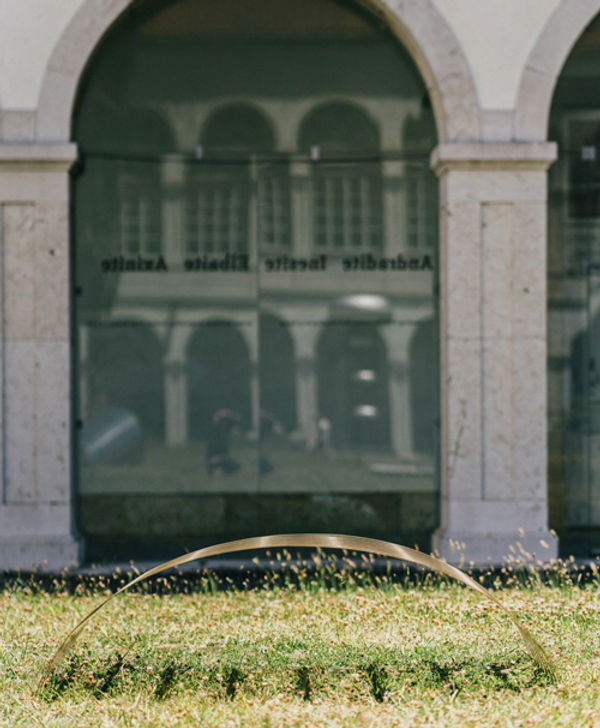A N N A B E L L E M O R E A U

FOLD II, Polished copper termo-laquered,100 cm x 50 cm x 50 cm, 2018

FOLD I, Polished copper termo-laquered, 50 cm x 50 cm x 50 cm, 2018

FOLD I & FOLD II VIEW , 2018

FOLD I, Detail, Polished copper thermo-lacquered, 50 cm x 50 cm x 50 cm, 2018

FOLD III, Mirrored Stainless Steel, 160 cm x 125 cm x 60 cm, 2018

FOLD III, Mirrored Stainless Steel, 160 cm x 125 cm x 60 cm, 2018

FOLD IV, Mirrored Stainless Steel, 100 cm x 150 cm x 100 cm, 2018

FOLD III, Mirrored Stainless Steel, 160 cm x 125 cm x 60 cm, 2018

FOLD III, Mirrored Stainless Steel, 160 cm x 125 cm x 60 cm, 2018
Time Shifts
The National Museum of Natural History and Science presents the second exhibition by Annabelle Moreau.
For the first time, the artist presents works destined for an outdoor space.
This exhibition invites the viewer to interact with objects through movement and reflect upon the nature of what is presented before their eyes. The relations between object, ground, light and reflections, essence and absence, allow the vision of new ephemeral states and optical illusion.
Five sculptures entitled Fold I, Fold II, Fold III, Fold IV and Fold V made in brass, copper and stainless steel, highly reflective and featuring simple folds, are placed outdoors in the museum courtyard reflecting the environment around them. Their fields of flat, innate colour allow the reflection of the architectural and natural space. The pieces simultaneously absorb tangible spatial division through subtle differentiation of colour, creating an illusory sense of reflected reality and confusing one's relationship with space.
Movement around the sculptures allows different visions of the same object as well as the experience of different realities changing from time to time. Visual experience and time-based experience of the natural environment through the implication of movement will allow the viewer to see an object in constant change of state.
Generously supported by:
Robert and Nancy Rosenthal Boston, MA , Ambassade de France au Portugal, Institut Français, Portugal, João Portugal Ramos Vinhos